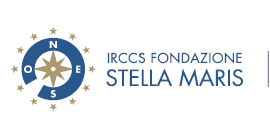/ Not yet recruitingNot Applicable Restoring Manual Dexterity in Multiple Sclerosis: A Feasibility Study Combining Muscle Electrostimulation and Transcranial Magnetic Stimulation To Enhance Neuroplasticity
The goal of this interventional study is to test whether combining transcranial magnetic stimulation (TMS) with functional electrical stimulation (FES) can improve hand and upper limb function in adults with Multiple Sclerosis (MS).
The clinical trial aims to determine the following points:
1. Whether TMS combined with FES produces greater effects compared to FES alone.
2. Changes in brain and muscle activity related to hand function after treatment.
3. Specific clinical or neurophysiological factors that predict who will benefit most from the intervention. Researchers will compare the TMS-FES group (receiving brain magnetic stimulation and muscle electrostimulation) with the FES group (receiving only muscle electrostimulation) to assess whether TMS provides additional benefits in improving upper limb function
Participants will:
* Be assigned to a group (TMS-FES group or FES group)
* Attend 15 sessions (45 minutes each, 3 times per week for 5 weeks) of task-based hand and arm exercises, during which FES, or TMS and FES, will be administered to the participant.
* Undergo assessments before, after, and 3 months after training to measure hand function, brain and muscle responses, fatigue, and daily activity performance.
/ Not yet recruitingNot Applicable Transcultural and Multidimensional Validation of dIgital Rehabilitation Intervention of COgnitive Resources Domain-Oriented - Work Package 4
The goal of this clinical trial is to learn if the use of a digital cognitive rehabilitation system named RICORDO, that is flexible and capable of adapting the rehabilitation pathway according to the needs and capacity of the patients will prove effective for subjects with Subjective Memory Complaint or with Mild Cognitive Impairment or with Mild Dementia.
The main questions it aims to answer are:
Will the RICORDO rehabilitation treatment, lead to an improvement in the global cognitive level? Will the RICORDO rehabilitation treatment lead to improved activation of participants in managing their own health and healthcare? Researchers will compare the multidomain cognitive rehabilitation strategy of RICORDO digital solution, with a standard paper pencil rehabilitation care (usual care).
Participants will undergo a comprehensive neuropsychological evaluation immediately before, immediately after and six months after the completion of the rehabilitation program.
Both interventions, the experimental and the usual care, will last 5 weeks, with 3 weekly sessions of 45 minutes each and can be done autonomously by the patient at home.
/ Not yet recruitingNot ApplicableIIT Pediatric Upper-Limb Rehabilitation With PhiCube, a Modular Bilateral End-Effector Device.
The present investigation is configured as a multicenter clinical study in a within-group pilot phase.
This study aims to investigate primarily the feasibility of use and effectiveness of a treatment for upper limb function in children aged 4 to 18 years with congenital and acquired neuromotor disorders through a new portable robotic system, called PhiCube, designed for bilateral neuromotor rehabilitation of the upper limbs in subjects with neuromotor disorders.
In order to specifically investigate also the potential impact of PhiCube on movement planning aspects, the study will also involve a small group of children aged 4 to 18 years with Developmental Coordination Disorder (DCD).
Before (PreT0 and T0) and after (T1 and T2) treatment, standardized assessment tests will be administered. Regarding the investigation objectives reported above, the primary outcome measure will be the Melbourne Assessment-2 (MA2), a standardized, valid and reliable instrument for evaluating the quality of upper limb movement in children with neurological deficits, capable of measuring four elements of movement quality: range of motion, accuracy, dexterity and fluency. As secondary outcome measures, Abilhand-Kids has been chosen, a brief questionnaire that measures 21 main daily bimanual activities completed by the parent or caregiver, and various subtests and questionnaires aimed at evaluating the neuropsychological processes involved and the effects related to auditory feedback perception.
The treatment will have a total duration of approximately 3 months and will be organized in 3 weekly sessions lasting 45 minutes each, to reach a total of 30.
Descriptive statistics of the clinical and technological variables obtained in the evaluation and rehabilitation phases will be calculated. Subsequently, treatment efficacy analyses through the robotic device are planned, comparing pre-post clinical variables. All collected data will finally be analyzed in order to compare the rehabilitative efficacy of the device with respect to the different groups of participants identified based on diagnostic profile.
100 Clinical Results associated with Fondazione Don Carlo Gnocchi Onlus
0 Patents (Medical) associated with Fondazione Don Carlo Gnocchi Onlus
100 Deals associated with Fondazione Don Carlo Gnocchi Onlus
100 Translational Medicine associated with Fondazione Don Carlo Gnocchi Onlus







